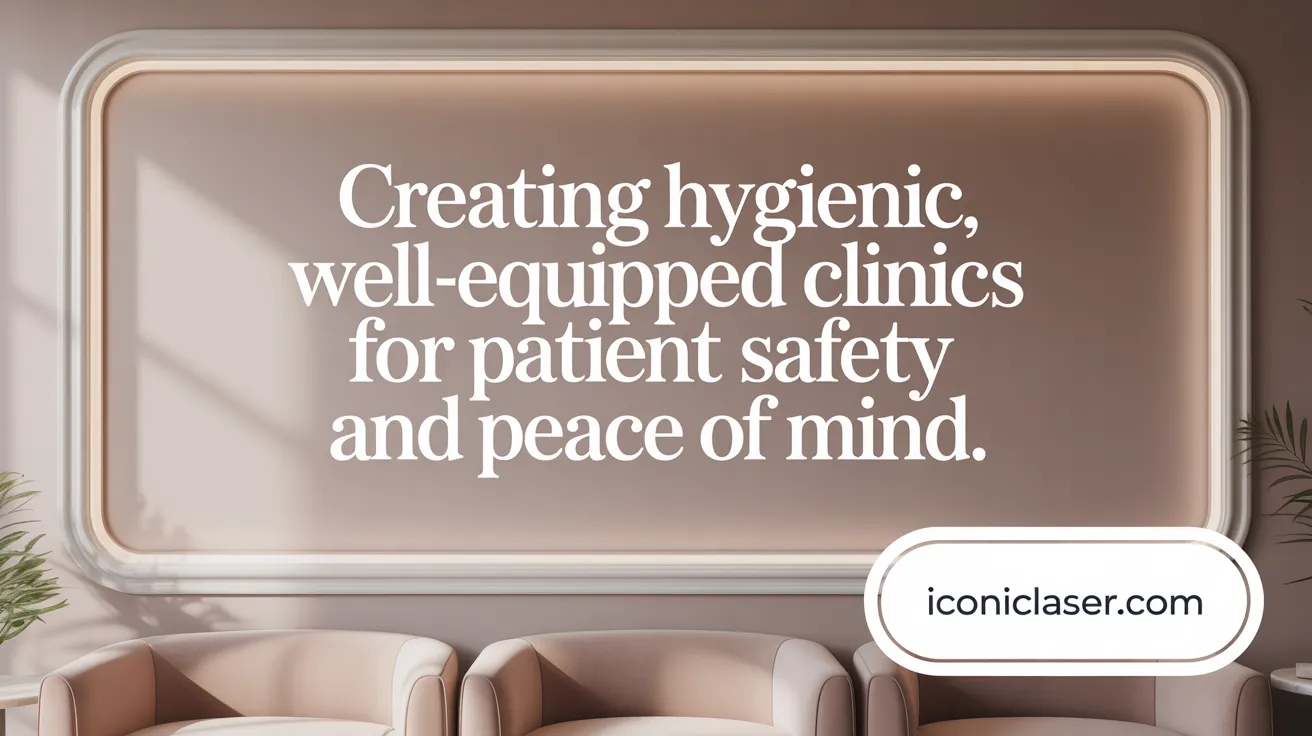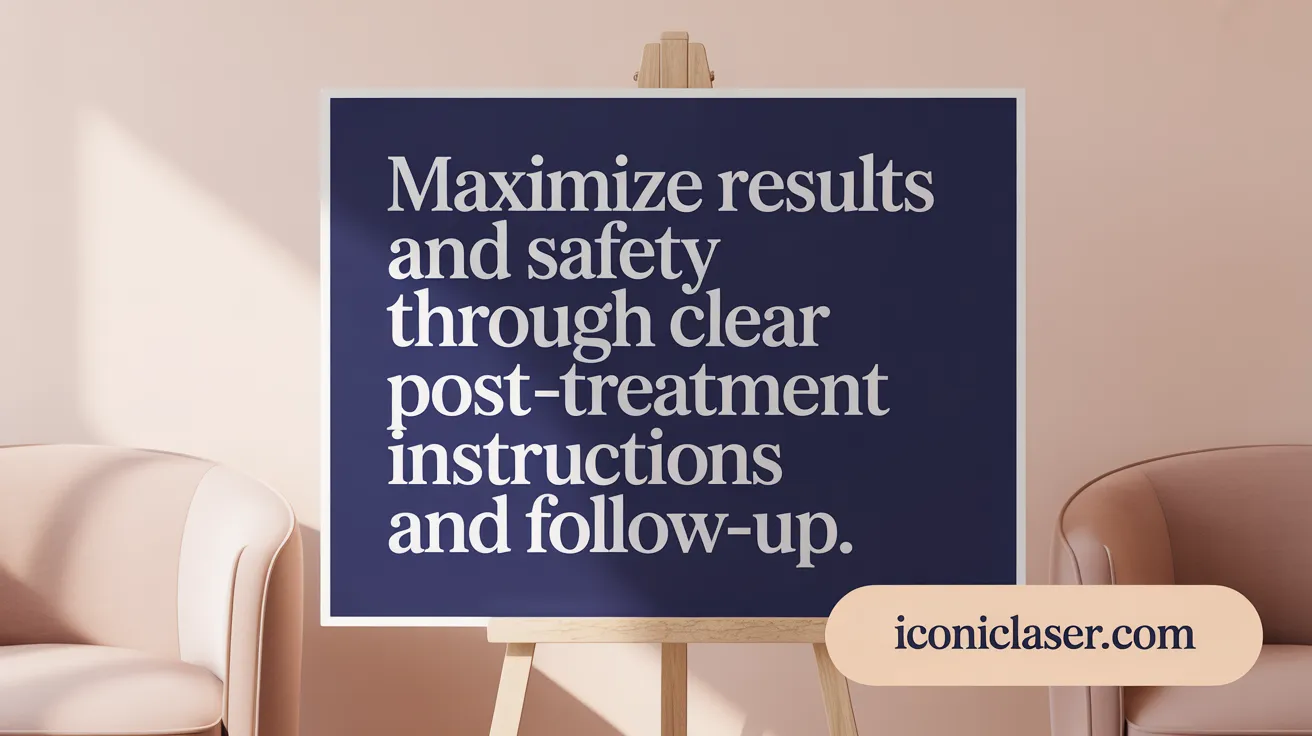Setting the Standard: Why Safety is Paramount in Medical Aesthetics
The Importance of Safety in Aesthetic Medicine
Safety is the foundation of all aesthetic medical treatments. Ensuring patient well-being during procedures such as injectables, skin tightening, and facial rejuvenation is not only ethical but crucial to achieving effective results without complications. Adhering to stringent safety protocols protects patients from infections, adverse reactions, and procedural errors.
Regulatory Guidelines and Clinical Environment Standards
Practitioners must comply with infection prevention guidelines established by provincial health regulators. Clinical settings should prioritize hygiene with surfaces that are smooth, seamless, and easy to sanitize, avoiding fabric materials that harbor contaminants. Facilities equipped with designated handwashing sinks, medical preparation areas, and emergency equipment contribute significantly to maintaining a safe treatment environment. Importantly, treatments must be conducted only in approved medical environments, never in retail settings or private homes, ensuring controlled and sterile conditions.
Role of Education and Training
Continuous education and rigorous training form the backbone of safety in aesthetic medicine. Providers administering injectables or performing advanced procedures such as Botox or radiofrequency skin tightening require board certification and specialized training. Clinics, especially those offering complex treatments, emphasize professional development to keep practitioners updated on the latest safety protocols and procedural innovations. This commitment to education ensures patients receive treatment from qualified specialists who prioritize safety above all else.
Establishing a Safe Clinical Environment for Aesthetic Procedures

How are hygienic clinic environments maintained for aesthetic procedures?
Maintaining a hygienic clinical environments is fundamental to patient safety in Safety in aesthetic medicine. Treatment rooms should have surfaces made of non-fabric clinical surfaces, smooth, and seamless materials which facilitate seamless surface cleaning and minimize contamination risks. Regular disinfection protocols must be followed to ensure clinical areas remain sterile.
What infection prevention guidelines should practitioners follow?
Practitioners adhere strictly to infection prevention guidelines set by Provincial health regulators, including thorough hand hygiene, use of personal protective equipment, and aseptic techniques in clinics during procedures. Such protocols reduce the risk of infections related to injectable and other minimally invasive treatments.
What essential facility features support patient safety?
Clinics must be equipped with designated hand washing sinks, a dedicated medical prep area, and readily accessible emergency equipment. This infrastructure supports safe treatment administration and rapid response to any complications.
Why is the use of FDA-approved products critical in aesthetic treatments?
Using FDA-approved products ensures that patients receive treatments with verified safety and efficacy profiles. These products are procured through legitimate channels and comply with stringent regulatory standards, minimizing risks associated with counterfeit or unapproved substances. The importance of FDA-approved injectable products is emphasized to guarantee treatment safety.
What advanced dermatological and cosmetic treatments does the clinic offer for skin rejuvenation?
Our clinic offers a comprehensive range of advanced dermatological and cosmetic treatments tailored to individual patient needs. These include:
- Laser therapies such as laser skin resurfacing and intense pulsed light (IPL) improve skin tone, reduce pigmentation, and tighten skin.
- Chemical peels remove damaged skin layers to boost texture and clarity.
- Minimally invasive treatments such as microdermabrasion and microneedling help reduce scars and stimulate collagen.
- Injectable treatments, including dermal fillers and Botox, smooth wrinkles and restore facial volume.
- Specialized spider vein treatments enhance overall skin appearance.
We often combine multiple techniques across sessions to achieve optimal and personalized Facial Rejuvenation Procedures outcomes.
Injectable Treatments: Safety Measures and Best Practices

Qualifications of Providers
Injectable treatments such as Botox and dermal fillers should only be administered by Qualified Clinicians for Injectables, including Licensed Plastic Surgeons for Injectables, Board-Certified Dermatologists, or trained medical professionals certified by relevant boards. At our Safety in Troy Michigan clinics clinic, patients can trust that all injectables are administered by experienced clinicians who adhere to strict Professional standards in aesthetic treatments, ensuring safety and optimal outcomes.
FDA-Approved Products
Safety in injectable procedures begins with the use of FDA-Approved Injectable Products that are sourced within the United States. Our clinic strictly uses only these approved substances to minimize risks associated with impurities or counterfeit products. This commitment guarantees the highest quality and safety in all facial enhancement treatments.
Patient Consultation and Disclosure
A thorough Injectable Consultation Process is essential before any injectable procedure. Our clinicians conduct detailed medical history reviews and encourage patients to disclose all medications and health conditions as part of Patient Medical Disclosure. During the consultation, Injectable Treatment Risks and Benefits and treatment alternatives are discussed comprehensively to help patients make well-informed decisions tailored to their aesthetic goals.
Post-Treatment Care and Follow-Up
Post-procedure care is critical for achieving the best results and ensuring patient safety. Patients receive Post-Treatment Care for Injectables instructions and have access to follow-up consultations to address any concerns or side effects such as swelling, redness, or bruising. Our team remains available to monitor recovery and provide guidance throughout the process.
Procedures Offered
At our clinic in Troy, Michigan, we offer a full spectrum of Facial Rejuvenation Procedures including dermal fillers and Botox, thread lifts, and non-surgical facelifts. Personalized consultations ensure each treatment plan is customized, providing natural-looking rejuvenation with advanced techniques.
Body Contouring: Balancing Efficacy and Safety
What body contouring treatments are offered to improve body shape and tone?
At our premium medical aesthetic clinic in Troy, Michigan, we offer a comprehensive range of Body Contouring overview treatments designed to enhance body shape and tone while prioritizing safety.
Non-surgical and surgical options
We provide non-surgical approaches such as Cryolipolysis (CoolSculpting®), Radiofrequency lipolysis (truSculpt®), and Laser lipolysis (Zerona®). These methods are minimally invasive, use advanced technology to target fat cells, and involve short recovery times allowing immediate return to daily activities. For more significant transformation, surgical procedures including Liposuction overview, tummy tucks (Abdominoplasty details), and various body lifts are available. These require anesthesia and a longer recovery period but can address larger areas and excess skin effectively.
Candidate assessment
Ideal candidates are evaluated individually, focusing on factors such as weight stability, overall health, and specific aesthetic goals. Those with localized fat deposits or loose skin after significant weight loss or pregnancy usually benefit most. A thorough review of medical history and lifestyle ensures personalized and safe recommendations. See also Candidates for body contouring and Body contouring post-pregnancy.
Pre-operative evaluation
Before surgery, patients undergo detailed physical examinations, diagnostic tests, and measurements. This helps formulate a clear surgical plan, ensuring optimal outcomes while addressing potential concerns. Refer to Preparing for body contouring surgery and Board-certified plastic surgeon evaluation for more information.
Risk management and recovery
Our clinic emphasizes risk management by adhering strictly to medical standards, minimizing infection, scarring, and other complications. Post-procedure, recovery times vary: surgical treatments may involve weeks of swelling and limited activity, while non-surgical methods typically allow immediate resumption of normal routines. Follow-up care monitors healing and addresses any issues promptly. Learn about the Body Contouring recovery process and Signs of complications after surgery.
Tailored treatment planning
Each treatment plan is customized, balancing desired results with safety considerations. Our experienced team prioritizes using FDA-approved devices and evidence-based methods, ensuring every patient receives expert care tailored to their unique needs. Additional insights on Benefits of Body Contouring and Choosing a qualified plastic surgeon help guide treatment decisions.
Women's Wellness in Medical Aesthetics: Integrating Safety and Specialized Care

How does the clinic address women's wellness through its medical aesthetic services?
The clinic prioritizes women's wellness by offering a comprehensive suite of Facial rejuvenation treatments that blend physical health improvement with emotional well-being. Specialized treatments such as vaginal rejuvenation and hormone therapy are central to their care, effectively targeting issues stemming from aging and hormonal changes to restore vitality and confidence.
Personalized treatment planning is a hallmark of their approach, with the clinic's team of experienced specialists developing holistic care strategies tailored to the unique needs of each woman. This ensures optimal Safety in aesthetic medicine while addressing both aesthetic goals and overall health.
Beyond individual physical treatments, the clinic recognizes the emotional benefits of these procedures, helping patients feel empowered and comfortable in their bodies. Non-invasive options complement these efforts, providing rejuvenation that enhances quality of life with minimal downtime.
This integrated model of care underscores the clinic's commitment to supporting women in achieving balance, health, and renewed self-esteem through safe, science-backed medical aesthetics.
Post-Treatment Care and Follow-Up: Ensuring Lasting Results and Patient Safety

Why are clear care instructions essential after aesthetic treatments?
Clear post-treatment care instructions are vital to ensure patient safety and optimize the results of aesthetic procedures. They guide patients on how to care for the treated area, avoid behaviors that could compromise healing, and recognize expected side effects such as mild redness, swelling, or bruising. Providing written instructions supports patient understanding and adherence, which helps minimize complications and supports faster recovery. For more on this, see Clear care instructions.
How should side effects and complications be monitored?
Monitoring side effects involves regular follow-up visits or communications that allow practitioners to assess healing progress and identify any unusual symptoms. Patients should be advised to report prolonged redness, swelling, persistent pain, or any unexpected skin changes. Early detection of complications, such as infections or adverse reactions, enables timely intervention and prevents further risks. Refer to the Injectable Safety Guide for detailed safety protocols.
What is the importance of managing patient concerns promptly?
Promptly addressing patient concerns fosters trust and ensures their well-being. Patients may experience anxiety or uncertainty about normal post-procedure symptoms. Open communication channels encourage patients to reach out with questions or issues, which helps providers offer reassurance or medical evaluation as needed. This proactive approach enhances safety and the overall patient experience. Learn more about Safety in aesthetic medicine.
How does follow-up care enhance treatment outcomes?
Follow-up care allows for the assessment of treatment efficacy and discussion of maintenance strategies. Providers can adjust future treatment plans based on results and patient feedback. Additionally, guidance on sun protection and skincare routines—such as using antioxidants like vitamin C—supports long-term skin health and prolongs treatment benefits. Continuous education during follow-up visits empowers patients to make informed decisions for their aesthetic goals. Detailed information on Dermatologists' Guide to Sun Protection can be helpful here.
The Role of Expert Consultation and Personalized Treatment in Safe Outcomes
Why Is Individualized Assessment Important in Aesthetic Treatments?
Individualized assessment is fundamental to ensuring Safety in aesthetic medicine. It involves a thorough review of a patient’s medical history, skin type, current medications, and any underlying health conditions. This tailored evaluation helps clinicians select the most appropriate treatment options while minimizing potential risks.
How Are Treatments Matched to Skin Type and Condition?
Matching treatments to skin type—whether dry, oily, combination, or sensitive—is crucial for achieving optimal results. For example, dry skin may benefit from hydrating approaches like Skin resurfacing treatments or Radio Frequency (RF) Skin Tightening, while oily skin often responds better to Skin resurfacing treatments and Skin resurfacing treatments. Sensitive skin requires gentler methods such as Skin resurfacing treatments with soothing topical care. Customizing treatments based on skin characteristics ensures better outcomes and reduces complications.
What Are the Benefits of Expert Guidance?
Expert guidance from Board-Certified Dermatologists or specialized providers ensures that patients receive treatments backed by the latest scientific evidence and performed with the highest Safety in aesthetic medicine. Experts provide detailed consultation about risks, benefits, and expected results, helping patients make informed decisions. Their training emphasizes Aseptic techniques in clinics and use of FDA-Approved Injectable Products, crucial to avoid adverse events.
How Does a Tailored Approach Reduce Risks?
A personalized treatment strategy reduces risks such as allergic reactions, improper technique complications, and unsatisfactory outcomes. By carefully selecting appropriate procedures and products for an individual's unique profile, clinicians minimize side effects like excessive redness, swelling, or pigmentation issues. Follow-up care tailored to the patient’s response also supports safe and effective recovery.
Ultimately, expert consultation combined with a personalized approach elevates patient safety and satisfaction in Safety in aesthetic medicine, promoting natural-looking, long-lasting results.
Commitment to Safety: The Foundation of Excellence in Medical Aesthetic Care
Best Safety Practices in Medical Aesthetics
Practitioners must follow infection prevention protocols mandated by health authorities, maintain sterile clinical environments, and use FDA-approved products exclusively. Proper facilities should feature designated hand washing sinks, medical prep areas, and accessible emergency equipment. Strict adherence to aseptic techniques is crucial, ensuring procedures such as injectables and RF skin tightening are performed safely.
Choosing Qualified Providers and Accredited Clinics
Only licensed specialists with board certifications and memberships in professional societies should administer treatments. Clinics should provide treatments in appropriate medical settings, avoiding informal venues. Verifying providers’ credentials and educational background is essential to guarantee expertise and maintain high safety standards.
Empowering Patients Through Education and Transparency
Patients must be fully informed about risks, benefits, expected outcomes, and post-treatment care during consultations. Transparent communication regarding products, procedures, and follow-up protocols cultivates trust. Awareness of red flags such as unusually low prices or unlicensed providers helps patients make safe, well-informed choices.
By prioritizing safety, qualifications, and patient education, medical aesthetic care achieves optimal, reliable results while minimizing risks.
